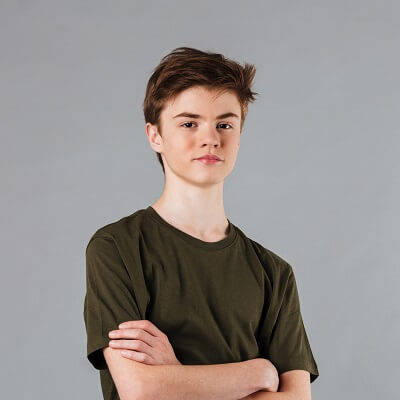Praha
6. 7. 2021 2021-07-06 10:35Praha
Prague
Prague
- the capital city of the Czech Republic
- situated in the centre of Bohemia
- River Vltava goes through this city
- has more than 1 million inhabitants
- The old centre of Prague consists of five historical districts: The Old Town, The New Town, Josefov (the Jewish town), the Lesser Town and Hradčany.
- Prague is political centre of our country
- there is seat of president (at Prague´s castle)
- government
- economic centre – there are many international companies, there is food industry, printing industry and brewery (Krušovice)
- In addition, it is educational and cultural centre of the Czech Republic.
History
- Prague is exceptional city because of its history and monuments. It is said that in ancient times, princess Libuše foretold future glory of the city, that Prague would touch the stars. In 9. century, Prague became the capital city of Bohemia and after the capital city of the Czech Kingdom.
- The reign of Charles IV. belongs to the most important period of our history. Charles IV. founded
- the Charles bridge
- Charles university
- Hungry wall
- The New Town
- Vitus cathedral
- Horse market (at this place, there is the Wenceslas square now).
- Another famous period is the reign of Rudolf II
- He invited many artists and scientists to Prague, so the city flourished. During this times, the Golden Lane was built for Rudolf´s artists and craftsmen.
- In 1918, Prague became the capital city of the Czechoslovak Republic and in 1993 of the Czech Republic.
If you visit Prague, you have to follow the Royal route to see the most famous monuments. You can start at Prague´s castle, which lies in Hradčany. Inside, there is large gothic Vladislav Hall which is used for representative purposes, Spanish Hall where president is elected an Rudolf´s Gallery. At the castle, you can visit St. Vitus cathedral which was built in gothic style by Matthias of Arras and Petr Padléř. In the cathedral, you can admire St. Wenceslas chaple which is decorated by precious and semi-precious stones. And inside the cathedral, there are saved czech crown jewellery. At the castle, there si also Golden Lane and the Basilica of St. George built in romanesque style.
From the castle, you can take the Nerudova street to follow the Royal route and you get to the St. Nicolas church, which is wonderful example of baroque style in Prague. It was bult by Dientzenhofers.
After that you get to the Charles bridge, which is crowded by tourists. In this famous bridge, there are 30 statues which were built by Brown and Brokoff.
After the bridge you take Charles street (on the left side, there is Klementinum, the national library) and the Charles street follow you to the Old Town square. You find there many important monuments, like the gothic Týn church where Tycho de Brahe is buried or St. Nicolas church, the smaller one, also built by Dientzenhofers. And, of course, the Old Town Hall with astronomical clock where once an hour small statues of 12 apostles appear (also there is Sceletons of Death, Zodiac, Calendar).
To finish Royal route, you go through Celetná Route to the Powder Tower (it gained its name according to gunder powder which was there). Near this, it lies nice Municipal Hall built in Art-nouveau style.
Another important square is Wenceslas square, very large square where is St. Wenceslas Memorial (bronz statue from Myslbek). At the upper end of this square you can visit the National Museum where you can see historical and natural collections, e.g. of butterflies, mammals or stones.
The cultural centre is the National Theatre which is situated near Vltava river. It was buil in 1881 but it burned so it was rebuilt in 1883 by Hynajs and Aleš.
When I was in Prague, I liked the most Petřín´s hill where you can walk in large gardens, e.g. there is amazing rosarium. You can gave a fun in mirror maze or you can climb Petřín observation tower and have a wonderful view of Prague. And this tower was built as small Eiffel tower. From Petřín´s hill, you can get to Strahov monastery, it is museum of czech litterature.
For the history of Prague, the Jewish community was very important. Nowadays, you can visit 6 synagogues in the Jewish town (Josefov), e.g. the Old-New synagogue which is the oldest one or Pinkas synagogue – on the walls, there are names of jewish people who died during the II. world war. Next to this synagogue, there is situated the Old Jewish cemetery where is buried Rabi Lów who, according to the legende, invented Golem.
Another important cemetery for our history is at Vyšehrad where are buried Neruda, Němcová, etc. And Karolinum – it is the oldest part of Charles university, nowadays, students are graduated there.

Koukni co o nás studenti říkají
Už od roku 2013 se staráme, aby naše materiály byly pro uživatele kvalitnější a přehlednější.
Díky za materiály. Ve škole jsem dlouho chyběla, ale naštěstí jsem našla všechno tady.

Klárka
Studentka základní školyHrozně moc zápisků a materiálů do školy. Když je Covid, tak se to ohromně hodí!

Robert
Student gymnáziaMaturitní otázky jsou skvělé!!!




